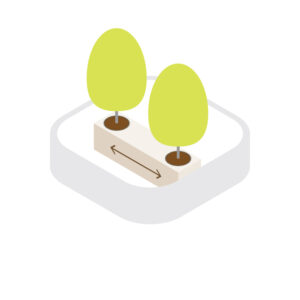How might we sustain a habitat for various species?
Site grading creates an optimal microclimate for different species.
- Undulating surfaces can create habitats with varying abiotic conditions, e.g. temperature and humidity, which are suitable for different species.

Well-designed soft landscape can provide living space for a variety of species.
- A diverse mix of plant species can create different habitats and increase the complexity, resiliency, and robustness of the ecological system. When selecting plants, consider the habits, attributes and ecological niche of the plants, as well as potential hazards to users and maintenance procedures. For example, fruit-bearing trees may require additional maintenance to keep paths free of dropped fruits during fruiting seasons. Consult relevant POS Personas, such as the Genie, the Conductor and the Sage, to maximise the ecological performance of the POS with minimum maintenance and risks. You may find it helpful to use Design Thinking Tool “Topic Cards” to facilitate knowledge-sharing sessions.

Sustainable design principles can promote biodiversity.
- Ecologically-important areas should be preserved to maintain the robustness of the ecosystem. Cultural practices associated with these areas can also have important ecological functions and if so, should be maintained. Common ecologically-important habitats include, but are not limited to wetlands, mangroves, and littoral zones.
- Innovative micro-interventions can create habitats for specific species. For example, a nest for pollinators can be installed.

This Design Parameter may not apply to Sitting-Out Area and Public Play Space, as these POS types are smaller in size.
This Design Parameter may not apply to Country Parks, where unnecessary design interventions should be avoided to preserve natural habitats






